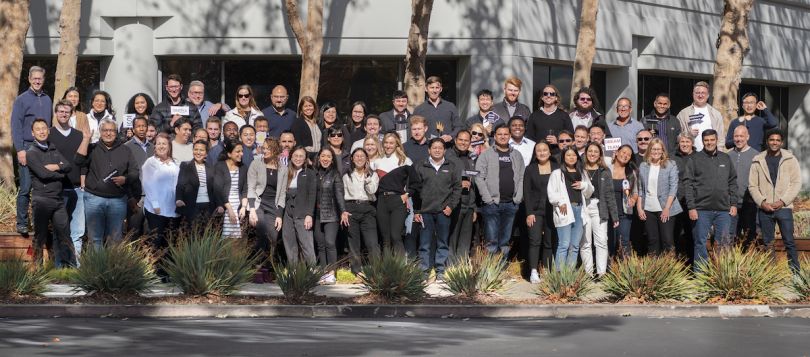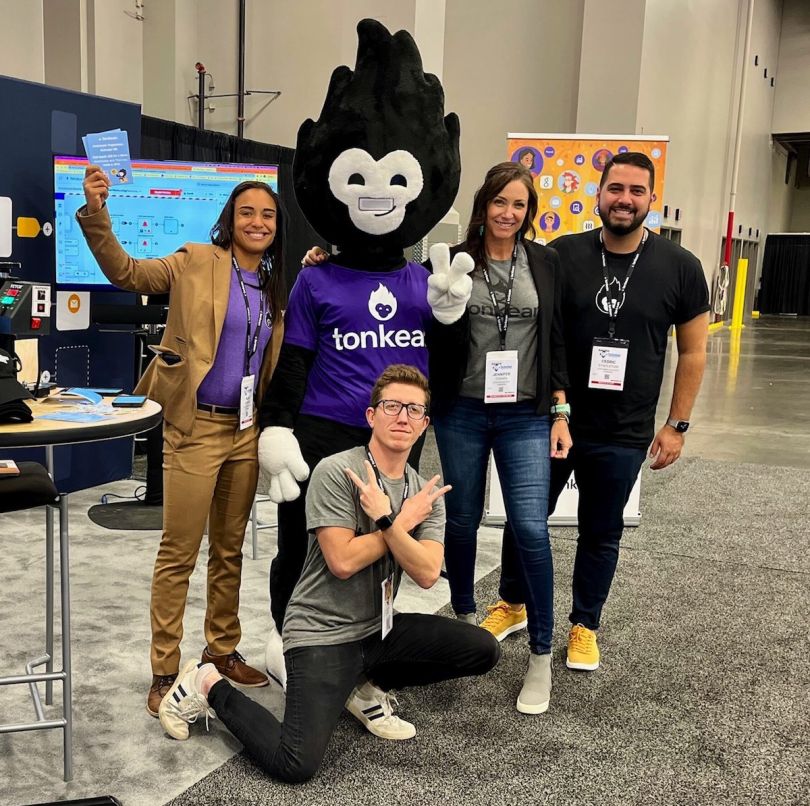First impressions matter, and San Francisco makes a good one. When you set foot in the city, colorful historic homes, a startlingly beautiful coastline, lush forests and preserves –– and of course –– iconic structures like the Golden Gate Bridge all contribute to that first impression.
Such an impressions often leads visitors and residents to uncover the area’s diverse culture and rich cuisines, brave the steepest, most winding streets and maybe even snag a job at one of its hundreds of tech companies.
San Fran-based companies like Simpplr and Tonkean strive to reflect the sensation their home leaves on its residents and visitors. For them, that first impression is the candidate experience.
“Communication, clear and concise feedback and resolute expectation-setting create a great candidate experience,” Jennifer O’Gara, GTM recruiting lead at Tonkean, said.
The candidate experience matters. When prospective hires have a poor one, most will share that with their friends and family, and more than half will use social media to spread the word about a bad experience, according to research by Aspire Cambridge.
What can make or break a candidate experience is communication. Relevant information — beyond just the date, time and location — regarding an interview and feedback following it can make candidates more comfortable and more prepared.
As for the gravest offense? The silent treatment.
“There is nothing worse than leaving a candidate hanging with no response, especially when they have invested time and energy into your organization,” O’Gara said. “It reflects poorly on your organization, and it’s unnerving for the person on the other side.”
To avoid unnerving already stressed candidates, O’Gara relies on three core tenets to build a recruitment, interviewing and onboarding strategy that leaves professionals feeling good.
Built In San Francisco found out what candidates need to know, and how companies can adapt their current recruitment and interviewing strategies to bring in talent.

Simpplr is an employee experience platform powered by artificial intelligence. Its adaptable products help organizations to deliver personalized experiences that inspire and engage their employees.
What is the most important thing you want candidates to learn about Simpplr, and how do you communicate it during the hiring process?
We want candidates to learn that people are the heart of everything we do here. It’s literally in our name. We are laser-focused on embedding our core values of simplicity, excellence and innovation into our work. Our talent partners communicate this with their actions and by sharing the resources they have to help set candidates up for success.
What are three ingredients that create a great candidate experience?
Communication, transparency and empathy. Communication throughout the process ensures candidates know what to expect and receive the feedback they need. Transparency is key for understanding the expectations for the role and in some cases, how and why certain business decisions have altered the course of the candidate search. Leading with empathy helps us look past the day-to-day process and truly understand the people behind the emails and phone calls. We want to provide an experience where the candidate feels their time and effort is valued.
We want candidates to learn that people are the heart of everything we do here.”
How has your candidate experience changed over time?
The candidate experience has always been important to us. But as our business needs grow, especially in today’s market, we are committed to providing an experience that stands out among the rest. Implementing processes that streamline scheduling and feedback ensure we move the candidate along the process in a timely yet thoughtful manner. Our employee experience team also created a more robust pre-onboarding and onboarding process to create an engaging experience when a candidate becomes a new hire. We made these changes because we strive for excellence every day.

Tonkean is a no-code operation system for business operations that helps ops teams transform from facilitators to makers. Its platform removes the technical knowledge required to automate, monitor and manage processes so enterprises can drive efficiency and reduce tech debt.
What is the most important thing you want candidates to learn about Tonkean and how do you communicate it during the hiring process?
I try to convey to candidates what an amazing team and culture we have at Tonkean. I’m proud of what we’ve built. We have an intensely collaborative culture where people are eager to pitch in and solve problems. We have thoughtful leaders who are flexible, transparent and trusting. They give our team members the space and resources they need to do their jobs creatively and well. There is genuine excitement about our mission to improve the lives of knowledge workers and democratize access to automation. You can feel it every day. People are happy and inspired. They’re also not overly stressed, in part because our culture allows a lot of flexibility around work hours and location. However you work best, Tonkean supports you.
You can feel it every day. People are happy and inspired. They’re also not overly stressed.”
What are three ingredients that create a great candidate experience?
Communication should occur at every step of the hiring process. It should be straightforward and easy to understand, and it should happen quickly. Part of communicating clearly and effectively is providing feedback throughout the process and setting expectations. Whenever I’m engaging candidates, I maintain communication at every stage and let them know what they can expect from us so far as timing. When scheduling interviews, I share as much as I can about future interviews and how the candidate will need to perform to move forward in the process. Even if we don’t hire someone, I want them to walk away from their interview experience with only good things to say about Tonkean.
How has your candidate experience changed over time?
When I first joined Tonkean, there wasn’t much of a system in place to inform our recruitment team’s work. Recruitment was conducted more ad-hoc, which resulted in a subpar candidate experience for several reasons, including lack of follow up. We have streamlined our recruitment process to improve the candidate experience. We use the technology we build here at Tonkean to automate a suite of formerly mundane recruiting tasks. This creates a more repeatable process for the recruitment team and a more seamless experience for the candidate. The moment a candidate completes their background check, the Tonkean recruitment team is notified via Slack and prompted to initiate — with the click of a button — the most logical next step in the process. I can then focus on the people part of the candidate experience rather than manually combing through the onboarding checklist. I spend more time in personalized conversations with candidates. Candidates meanwhile receive more rapid and personalized attention, which is smoother and more enjoyable.









